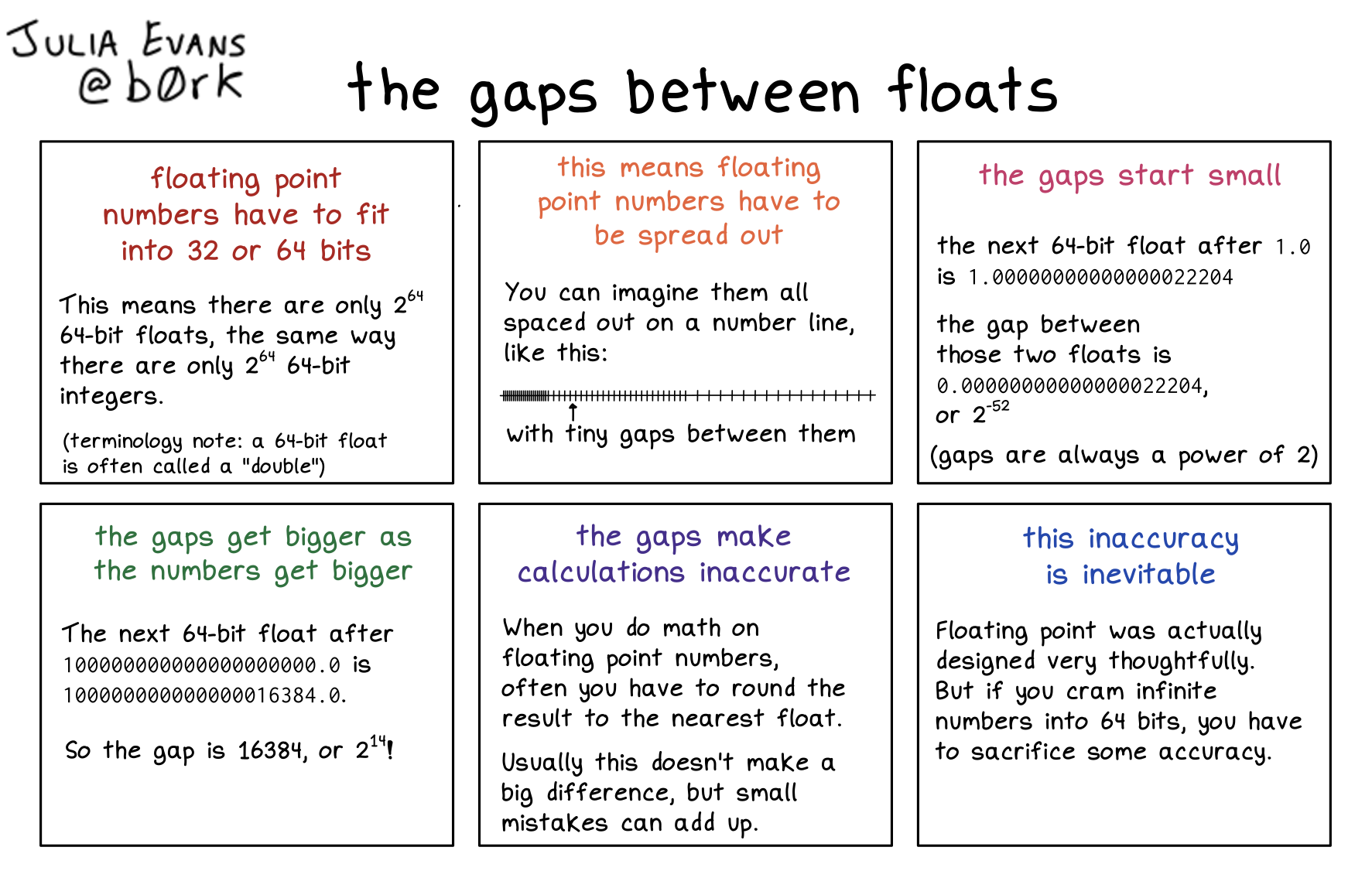
Here's a preview from my zine, How Integers and Floats Work! If you want to see more comics like this, sign up for my saturday comics newsletter or browse more comics!
 browse more comics!
get the zine!
browse more comics!
get the zine!
read the transcript!
title: the gaps between floats
panel 1: floating point numbers have to fit into 32 or 64 bits
This means there are only 2^64 64-bit floats, the same way there are only 2^64 64-bit integers
panel 2: this means floating point numbers have to be spread out
you can imagine them all spaced out on a number line, like this: (picture of a bunch of lines, with small gaps between them. The gaps are smaller on the left and bigger on the right)
panel 3: the gaps start small.
the next 64-bit float after 1.0 is 1 point (lots of 0s) 2
the gap between these two floats is 0 point (lots of 0s) 2, or 2^-52
gaps are always a power of 2
panel 4: the gaps get bigger as the numbers get bigger
the next 64-bit float after 1000000000000000000 is that number plus 16384.
so the gap is 16384, or 2^14!
panel 5: the gaps make calculations inaccurate
when you do math on floating point numbers, often you have to round the result to the nearest float
usually this doesn’t make a big difference, but small mistakes can add up
panel 6: this inaccuracy is inevitable
if you want math to be fast, you have to store the numbers in a fixed number of bits, like 64 bits. So you’re always going to have accuracy issues.
Saturday Morning Comics!
Want another comic like this in your email every Saturday? Sign up here!
